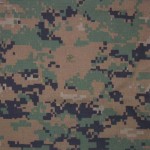At Looserounds, a bit of an exercise in stripping away the myths and legends about the M-14:

Go on to any gun forum, and it won’t take you long to find people willing to tell you how great the M14 is. How accurate,like a laser, tough as tool steel with no need to baby it or clean it. Powerful as a bolt of lightening, and how well loved it was by those early users who refused the M16 because they wanted a “real” weapon made of wood and steel … But, is all that really true? Maybe it is a triumph of nostalgia over common sense and reality. One truth is, it was never really liked as much as people think they remember.
[…]
To quote Lt Colonel Chandler owner of Iron Brigade Armory and former Officer in Charge of many USMC marksmanship and sniping programs.
“Remember that the US Army struggled for more than twenty years to transform the M14 into a sniper type weapon. The Army finally abandoned all attempts to salvage the M14 rifle. Continued use of the M14 as anything other than a drill rifle is better described as DISASTER. ( emphasis Chandler’s). The M14 is old, and has never been more than a modified M1 Garand.”
“Unfortunately the M14 rifle is costly to modify and modification requires many man hours of skilled labor. In the field the m14 cannot maintain accuracy. The Army refused to admit that they could not solve the M14’s accuracy problems and wasted two decades attempting to make a silk purse from an old infantry rifle. Milspec spare parts are no longer made and those that can be found are often inferior, and ill fitting.”
“The M14 requires constant ( continual ) maintenance. Maintenance on an M14 progress geometrically. That means if you double an M14 rifle’s use, you quadruple its maintenance.”
“The world has moved beyond the M14. The weapon remains a standard piece only because it is used ( though less and less) in service rifle competition marksmanship, which is very different from field use. If anyone recommends it, run them through.”
“It is ironic that some of the USMC rifle competitors whose accurized M14s have been consistently waxed by the Army’s M16 s are supporting the use of the M14 as accurate rifles.”
“As we discuss the costs of bringing scoped M14s onto line in large quantities, allow me another digression. The M14 is a bitch to keep in tune, and a untuned M14, no matter who did the accurizing is about as accurate as a thrown rock . Unless the M14 is continually babied it will not retain accuracy. ( this is an important note from LT Col Chandler for those who fire 100 rounds a year and tell you the M14/M1A is wonderful). Imagine the hardships and brutalities a scoped M14 will experience as a DM weapon in combat. ( one recalls the story of Carlos Hathcock walking back the shoot house and starting to pass out, another Marine grabbed the accurized M14 and let The Ultimate Sniper fall face first into the asphalt. Letting a weakened man fall to keep the pathetic NM M14 accurate). No M14 ever built will stay accurately zeroed and tight group shooting , (meaning close to MOA) under field conditions.”
Chandler goes on to point out the requirements in specially qualified armorers who know how and can keep a M14 accurate and how even in the early 2000s those men are almost extinct in the USMC accuracy and Sniping world.
I can honestly say that I don’t have a dog in this fight. As the Canadian Army standardized on the FN C1A1 well before my militia days began, it was the only assault rifle I had extensive experience with … and I loved it. If the government hadn’t pre-emptively added the FN to the restricted weapons list, I’d certainly have bought one when they were being retired from active service. I’ve fired an M-14 once, and I’ve fired an M-16 once, but that’s nowhere near enough exposure to make any kind of judgement about either weapon (and they’d really have to impress the hell out of me to displace the FN in my estimation anyway).






